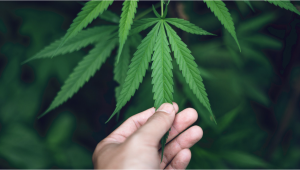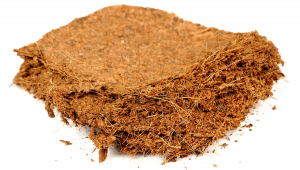How to Flush Autoflowers?

- 1. What is flushing?
- 2. Why flush cannabis plants?
- 3. When to flush cannabis plants?
- 4. Why are plants flushed before harvest?
- 5. Why are plants flushed during a nutrient lock-out?
- 6. How to flush autoflowering cannabis plants?
- 7. Can you flush plants growing in organic soil?
- 8. In conclusion
Flushing your cannabis plants is important if you want to harvest some amazing buds. It’s pretty simple with regular cannabis plants, but growers always wonder how to flush autoflowers. Flushing autoflowers is basically the same as with photos but due to autos having a limited amount of time to grow, you should only flush during the last week. And, this has everything to do with the lifespan of autos. Some growers decide to avoid flushing their cannabis plants and claim that they experience no differences between flushed and unflushed flowers. However, other cultivators report that flushing their plants results in buds that taste better and provide much smoother smoke.
Ultimately, it all comes down to subjective experience and personal preference. However, the theory behind flushing cannabis does make sense, and many growers choose to follow this practice every time they grow weed. The logic goes that by restricting nutrients, plants are forced to use up the reserves that are stored within their flowers and leaves. By using up these residual compounds within the buds, they remove compounds that otherwise interfere with the innate terpene profile. In this article, you’ll learn everything there is to do about flushing, and when to do it.
1. What is flushing?
Flushing is nothing but detoxifying your cannabis plants. It is done to remove all the nutrients you’ve previously fed to the plant during its growing and flowering cycle. Just like the human body requires detoxification at times, it’s important to remove built-up nutrients at the end of its cycle. Of course, plant nutrients aren’t physiological toxins in plants. However, an excess of nutrients within plant tissues—especially the flowers—will decrease the quality of the end product. Although these substances are vital to plant growth and development, they can actually detract from the taste of harvested buds.
If you’ve ever smoked top-shelf flowers from a dispensary or coffee shop, you’ll have memories of an incredibly smooth and flavourful experience. This is because these buds underwent flushing to purge out nitrogen and other elements that are harsh to the palate and throat.
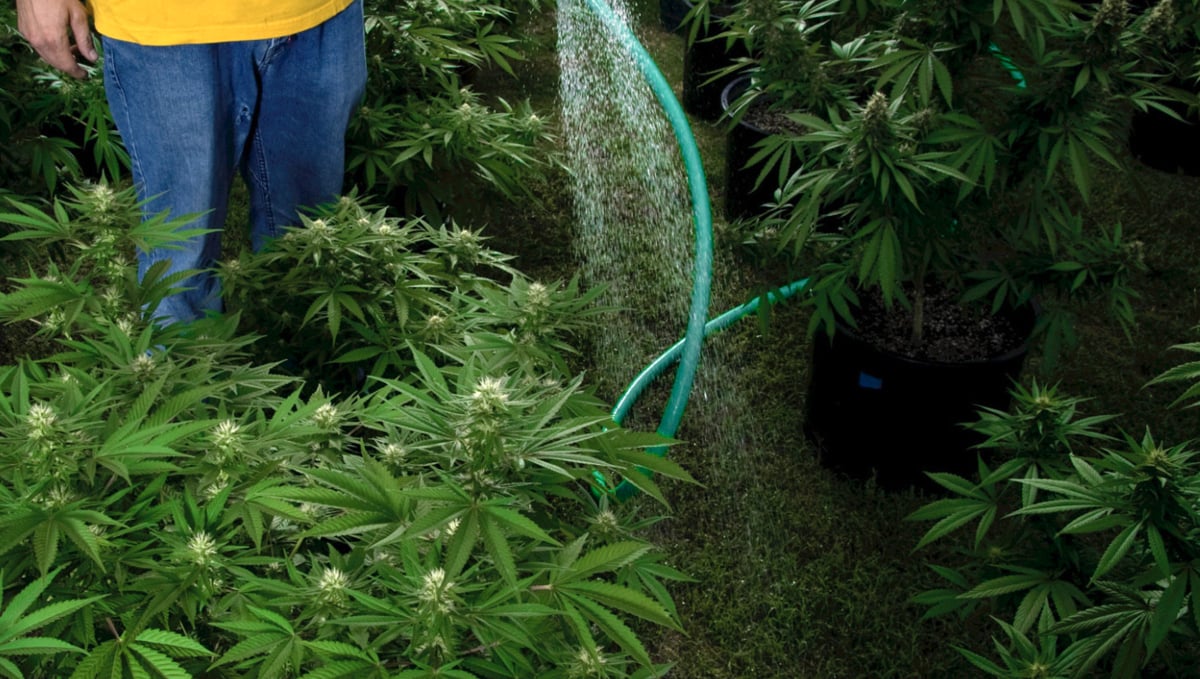
Flushing is done by feeding a lot of plain water without any nutrients. Generally, you do that at the end of the cycle once the buds turn amber. It’s important to correct the pH of the water before you flush, though. However, one must use plain water sans nutrients to detoxify cannabis plants. Also, plain water means plain simple water. You shouldn’t add any nutrients, yes, but don’t use any other supplements either. If you flush the plants with added supplements, the point of flushing becomes moot.
2. Why flush cannabis plants?
Many cannabis growers don’t bother with flushing. In reality, there’s no evidence that flushing actually helps because plants synthesize nutrients in different ways. However, you will notice a slight difference in taste if you put in the effort of flushing. Moreover, flushing helps remove the bad taste of chemicals that can hamper the final outcome of the buds. Another important factor to remember is that flushing helps reduce the harshness present in the buds. Of course, the harshness is usually reduced if you cure the buds properly, but flushing does contribute to making the buds a lot smoother.
Something most growers don’t consider is that while flushing might not increase the potency and flavor of buds in some circumstances, it certainly doesn’t decrease it. Why is this important? Because some growers decide to flush their plants for up to three weeks, whereas others continue to feed a full nutrient regimen during this time. Even if the buds are of equal quality at the end of both approaches, the grower who decided to flush saved three weeks worth of nutrients that they can put to good use during their next grow.
3. When to flush cannabis plants?
Flushing can improve the quality of the buds, but only if it’s done right so how often should you flush autos? Well, it depends on why you’re doing it but in general, you should flush up to 3-5 times, allowing the substrate to dry in between flushing, which can take 2-3 days so the flushing process can end up taking up to 1-2 weeks.
Now, if you’re wondering when you should start flushing autoflowers, you should know that flushing is done under two conditions, and they are:
- Just before harvest
- During a nutrient lock-out
4. Why are plants flushed before harvest?
As mentioned already, plants are flushed for a few weeks (at least 2 weeks, although this is dependent on the style of cultivation)) before harvest to remove any excess nutrients. For instance, if your plant has a flowering period of about 10 weeks, you can start flushing once it reaches 8 weeks. However, ensure that the plants are almost ready to be harvested before you flush them. This means that you must check the trichomes to now when the plant is ready to be flushed. In case the buds are filled with only clear trichomes with no cloudy or amber trichomes, you will need to wait a bit more.The best way to check if your buds have reached their peak and are ready for harvesting is to take a good look at the trichomes.
To do this you are going to have to grab either a jeweler’s loupe or even better a pocket microscope. As trichomes mature, they change in appearance from clear, to cloudy, and finally to an amber hue. We all know about the differences in the psychoactive effects between Sativa and Indica dominant strains, but one thing that many novice growers do not realize is that the maturity of the trichomes also has a direct influence on this also.
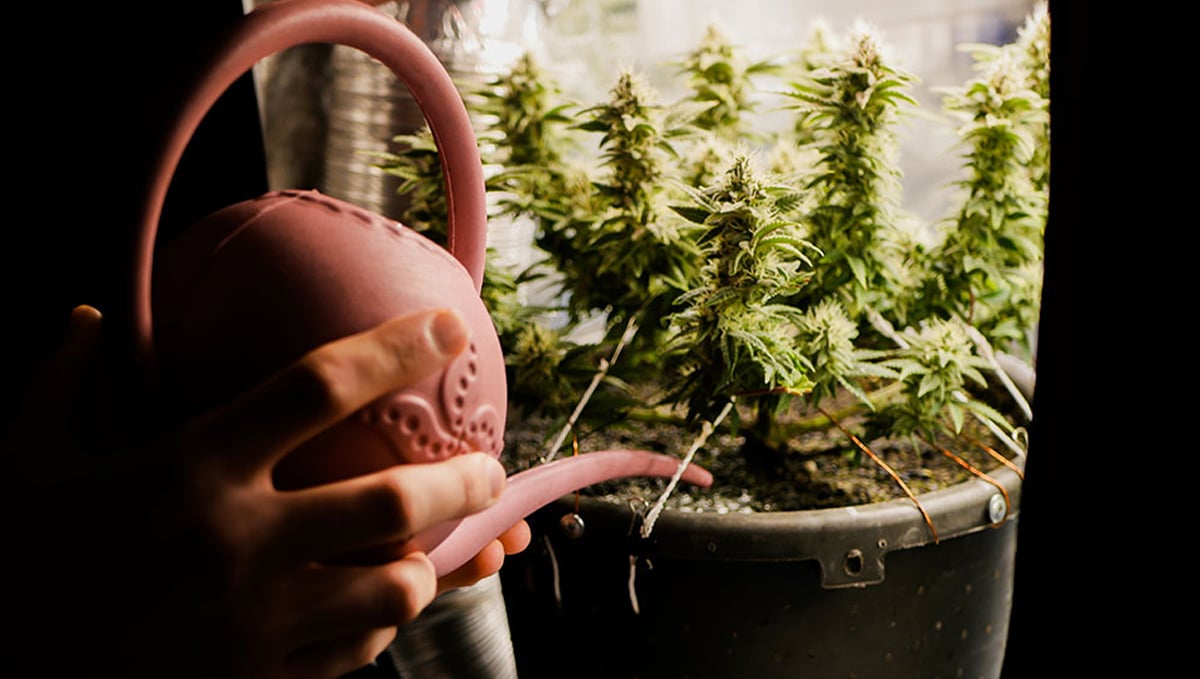
The longer you let the trichomes mature, and the more that turn amber, the heavier the “couch-lock” effect will be - to a certain point anyway. If you decide to harvest the buds when they are mostly clear, the high will present as much more uplifting and clear. If you wait until there is a balance of about 70% amber trichomes with 30% cloudy (the standard harvesting point) then you should be getting the buds at their peak THC production. Some growers like to wait even longer, as more amber trichomes will result in more CBN. This is associated with a more relaxing and sedating high, with anxiety-reducing properties.
All autoflowers come with a specified flowering cycle, but sometimes the timing changes depending on the nutrients, space, and the way you grow them. For example, if you plant a Gorilla Glue Auto that comes with a specified flowering cycle of 8-9 weeks, you’ll start flushing when it reaches the 6th or 7th week. However, it’s possible that it needs at least two more weeks to actually complete its cycle. It may need 10-11 weeks at times.
This can happen due to the nutrients you have used and even due to temperature. Thus, you need to check the trichomes and the color of the pistils before you start flushing. Another way to check when to flush is to check the trichomes carefully with a magnifying glass. Trichomes are the crystals found on cannabis buds and sugar leaves. Generally, the trichomes appear clear at first. Then, they turn cloudy until they become a little milky in color. As soon as they begin to look a little cloudy or milky, you can start flushing them. Flushing your autos should be a planned event. Thus, time it well. What happens if you flush at the wrong time? You simply force the plant to get rid of its own food and render it helpless.
5. Why are plants flushed during a nutrient lock-out?
The amount of nutrients you sometimes feed to your autoflowers can increase to such an extent that it results in a nutrient lock-out where the plant can no longer feed itself. This situation can be threatening to the plant and usually results in small yields. If the leaves look like they are burnt or are abnormally dark green in color, it’s a sign of a nutrient lock-out. Overfeeding can also result in nutrient lock-out. For example, excess nitrogen can result in nitrogen toxicity where the leaves begin to look like claws.
In such situations, it’s important to restore the plant back to normalcy. And, that can be done only by flushing. Flushing removes all the excess nutrients and allows the plant to grow normally. Of course, you cannot correct the problem immediately, but it takes at least 2-3 days for the plant to reset itself and get back to normalcy.
Remember that while flushing to remove excess chemicals is done during the vegetative stage, flushing to make the buds smoother is done during the final flowering stage. There’s a lot of difference between the two. This is one of the main reasons why here at FastBuds, we almost always recommend novice growers use coco-coir as their main substrate. Coco-coir is an amazing cultivation medium, as it combines many of the advantages of growing both hydroponically and in soil while cutting out most of the disadvantages associated with both mediums.
It holds up to 70% more oxygen than soil, offers far better root ball support and protection than pure hydro systems, and can be flushed extremely easily. These days almost every single reputable nutrient company has its own coco-coir blend available, resulting in the prices per bag plummeting in the past 4 years or so.
6. How to flush autoflowering cannabis plants?
Flushing your autos is pretty simple. Let’s imagine that your plants are ready to be flushed. If you’re feeding 2-3 liters of water, simply use plain water after correcting the pH without any nutrients. If the size of the container is about 3 gallons, you can use about 6-10 gallons to remove all the excess nutrients.
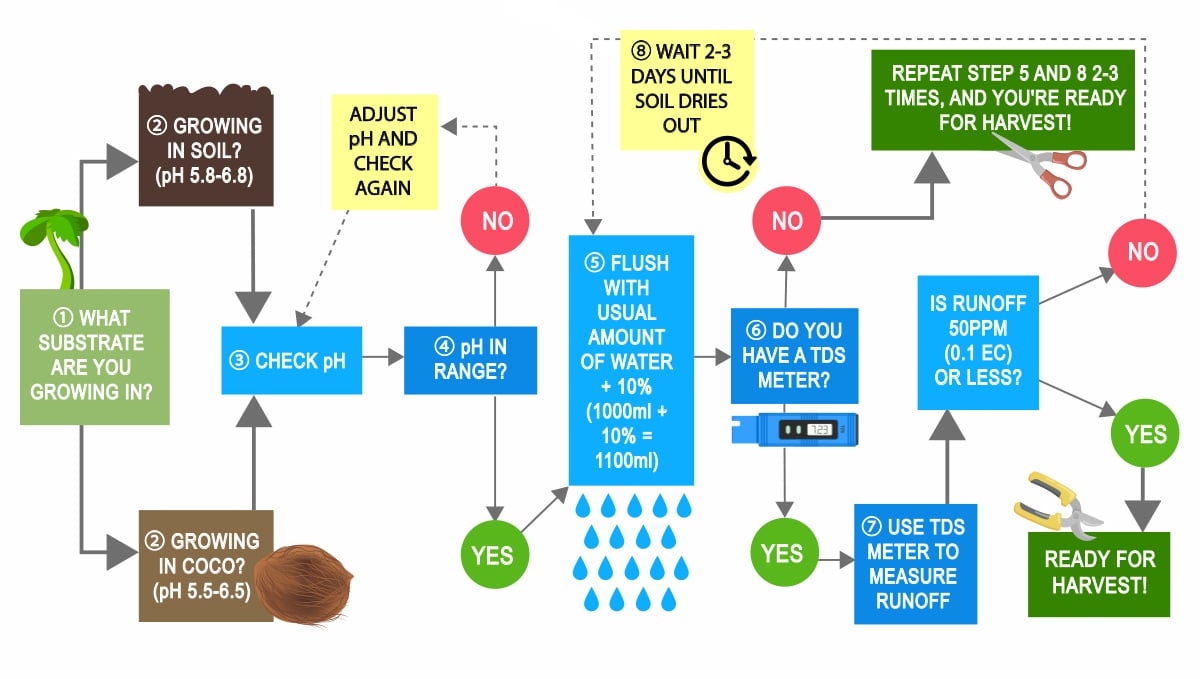
Generally, tap water is used to flush plants. However, make sure you keep an eye on the pH. If you’re too worried about chlorine in the tap water, just let the water sit in an open space for about 24 hours and you’re good to go. Keep pouring the water into your pots until you see it draining out of the pot. Also, the drained water might look dirty due to excess chemicals. Use your TDS meter to check the PPM. The PPM of the drained water will usually be high. Sometimes it can go up to 1500 PPM. Continue with flushing the plant until the PPM reduces and goes down to 50 PPM. If you cannot achieve that, make sure that the PPM matches at least the tap water you’re using.
A common practice is the double flush method. The involves dousing the pots in as much water as they can hold, waiting about ten or so minutes (or until most of the water has drained out of the pots), and then hitting them again with the same amount of water. This method has been proven to be super effective, especially in coco-coir cultivation. Keep in mind that, to get the very best results, you should try to flush the plants with lukewarm water. Why? Well, it is due to the fact that the majority of the nutrients and chemicals that we are trying to wash away are more easily dissolved with lukewarm water than with cold.
7. Can you flush plants growing in organic soil?
There’s a lot of difference between growing in organic or super soil and using chemicals. It’s best to not flush your plants if they are growing in organic soil because you will kill all the microorganisms present in the soil. It takes time for the microbes to build a suitable ecosystem and you might just ruin it all. Even if you wanted to, you can’t actually flush living soil anyway. Growers that use inert growing mediums and synthetic nutrients can easily flush soil because the plant depends on them for nutrients several during several days of the week. In contrast, living soils are dynamic systems filled with microbes that constantly cycle nutrients.
When fungi and bacteria release enzymes into their external environments, they break down large molecules (polymers) into simple molecules (monomers). They then uptake these simple compounds. When predators such as nematodes and worms eat lifeforms, they release a certain quantity of plant-available nitrogen and other nutrients. Even when you add nothing but water, a certain amount of nutrient cycling will still occur in living soil.
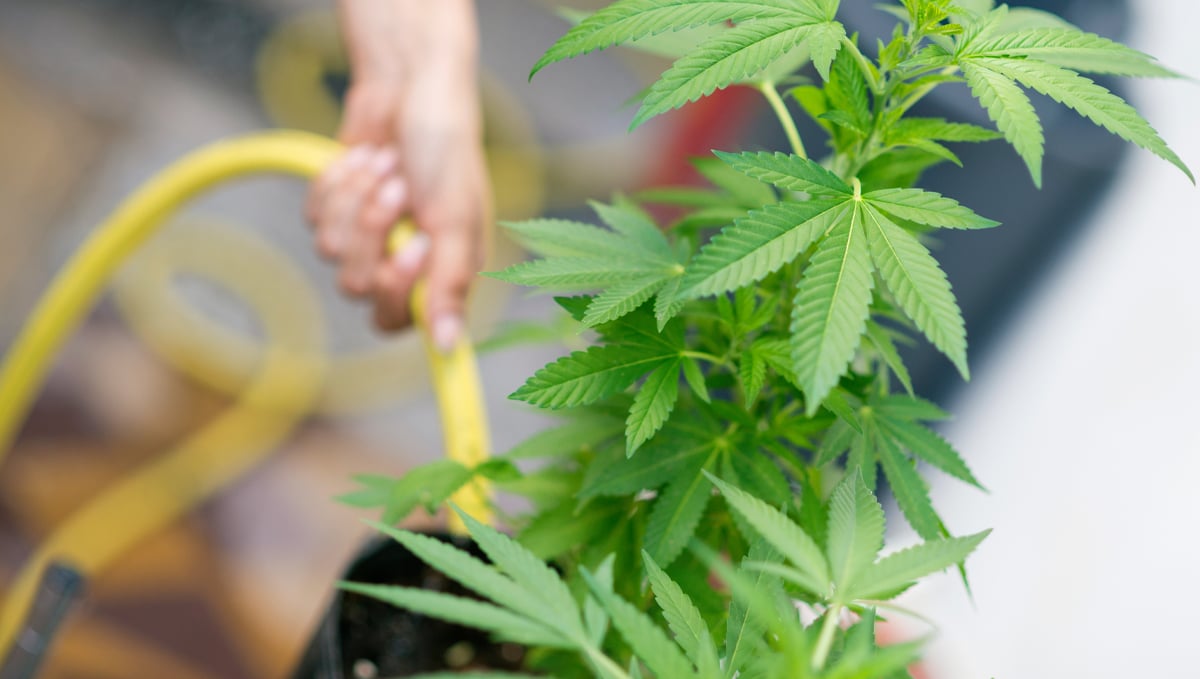
The microbes and other microorganisms are already doing a fantastic job of delivering the nutrients to the plant, so they don’t need you to interfere. The ecosystem is pretty delicate and the soil you’ve worked so hard for (if it’s your own super soil) will all go for a waste. Many people grow organic cannabis simply because they don’t believe in using chemicals. It’s not necessary to flush such plants since they will not produce a weird taste when you’re smoking the buds. Of course, you will have to cure the buds whether they are grown organically or inorganically but flushing is not necessary.
Last but not the least, remember that flushing helps to improve the taste of the buds. You can experiment by flushing one plant and experience the difference yourself. Flushing + curing = mind-blowing taste, so don’t forget to flush your autoflowering cannabis plants!
6. In Conclusion
So, hopefully, we have explained the flushing process in a way that is easy to understand and implement. It's super simple really. Double flush heavily with lukewarm water, test the runoff to make sure it is dropping with every flush to the point that it drops below 50 PPM (or to the same number as the tap water you are flushing with), and flush for a minimum of a week. Simple!








